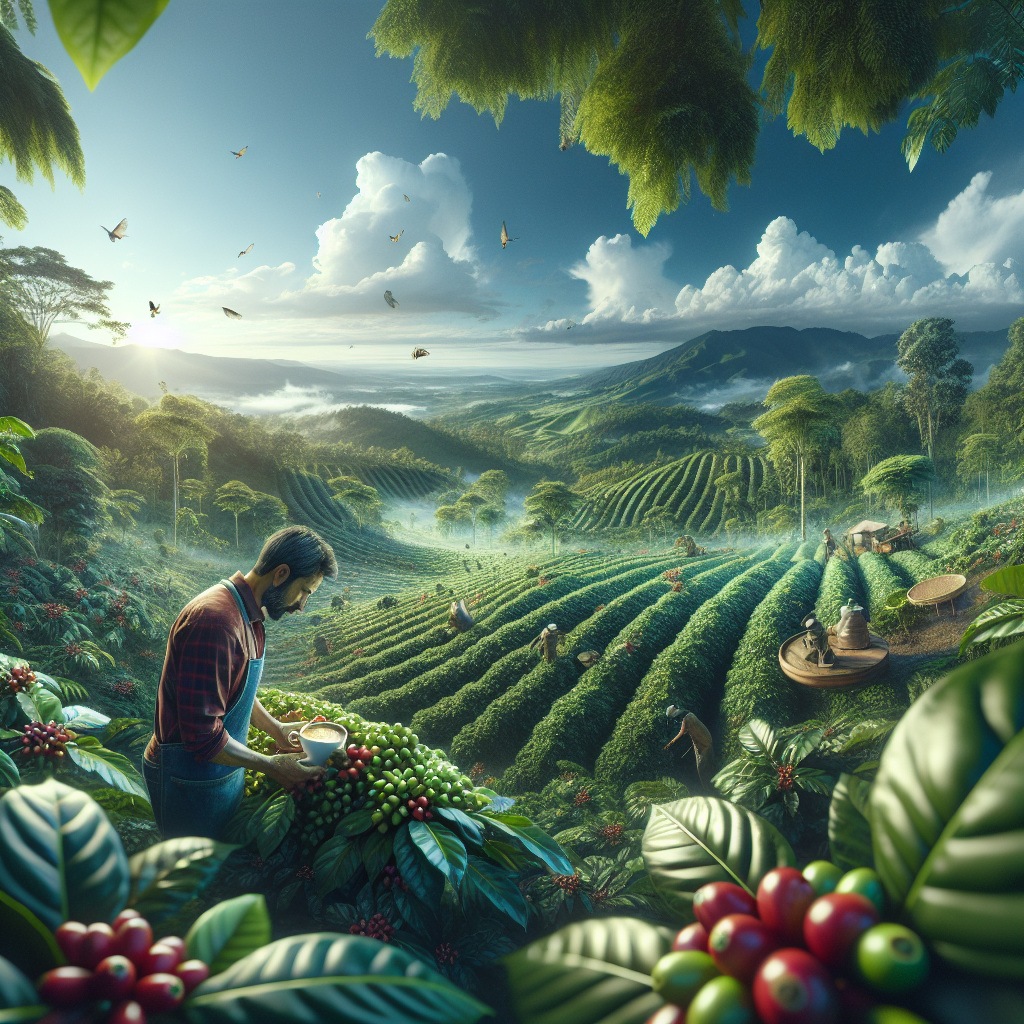The Environmental Impact of Robusta Coffee Cultivation: Sustainability Practices and Future Prospects
1. Introduction to Robusta Coffee
Robusta coffee, scientifically known as Coffea canephora, is one of the most significant species in the coffee production industry. Originating from central and western sub-Saharan Africa, Robusta coffee has grown to become a major commodity in the global market, representing about 40% of the world’s coffee bean production.
Compared to its cousin, Arabica, Robusta is known for its stronger flavor profile, characterized by bitter notes and hints of pepper. This unique taste makes it a preferred choice for certain coffee blends, particularly espresso. The economic importance of Robusta is further amplified by its relatively low production costs and its resilience to pests and diseases.
2. Growth Conditions and Cultivation Practices
Robusta coffee plants thrive in low elevation and warmer climates, making them less demanding compared to Arabica plants. These conditions allow Robusta coffee to be cultivated in a broader range of environments. The plants are also more tolerant to fluctuations in temperature and rainfall, which provides an advantage in the face of climate change.
Common cultivation techniques for Robusta coffee involve the use of agroforestry practices to improve soil health and biodiversity. Additionally, water and soil management play crucial roles in the successful cultivation of Robusta coffee. However, challenges such as soil degradation and water scarcity pose significant threats to sustainable farming practices.
3. Environmental Impact of Robusta Coffee Production
The expansion of coffee plantations often leads to deforestation, resulting in a loss of biodiversity and disruption of local ecosystems. Water usage in coffee production is another critical concern, as excessive water demand can strain local water resources and affect surrounding communities.
Monoculture farming practices contribute to soil degradation and reduce the land’s fertility over time. The use of pesticides and herbicides, while effective in pest management, poses risks to biodiversity and the health of ecosystems. The carbon footprint associated with Robusta coffee production further emphasizes the need for sustainable practices.
Sustainability Practices in Robusta Coffee Cultivation
| Practice | Description | Benefits |
|---|---|---|
| Organic Farming | Utilizes natural fertilizers and avoids synthetic chemicals. | Improves soil health and reduces environmental pollution. |
| Shade-Grown Coffee | Cultivating coffee under a canopy of trees. | Preserves biodiversity and enhances ecosystem stability. |
| Water Conservation Techniques | Methods such as drip irrigation and rainwater harvesting. | Reduces water consumption and protects local water sources. |
| Integrated Pest Management (IPM) | A strategy that combines biological, mechanical, and cultural practices. | Minimizes chemical usage and protects beneficial organisms. |
| Fair Trade Practices | Ensures farmers receive fair compensation for their products. | Improves social and economic conditions for farmers. |
| Technological Innovations | Utilization of technology to improve farming efficiency. | Enhances productivity while minimizing environmental impact. |
| Farmer Collaboration | Working with environmental organizations for sustainable practices. | Promotes sustainable techniques and community development. |
Future Prospects for Robusta Coffee Cultivation
The future of Robusta coffee cultivation holds both challenges and opportunities. Projections suggest that the demand for Robusta coffee will continue to grow, driven by its economic advantages and unique flavor profile. However, this growth must be balanced with sustainable practices to ensure environmental preservation and social equity.
Consumer demand plays a crucial role in shaping sustainable practices within the coffee industry. As awareness of environmental issues increases, consumers are more likely to support brands that prioritize sustainability. This shift in consumer behavior can drive positive change in Robusta coffee production.
Climate change poses significant risks to coffee cultivation, affecting crop yields and quality. Innovations in coffee processing, such as advanced farming techniques and sustainable sourcing methods, are essential to mitigate these risks and support the long-term viability of Robusta coffee. Additionally, empowering farmers through education and access to resources is vital for fostering sustainable cultivation practices.
Conclusion: Balancing Demand and Sustainability
In summary, the cultivation of Robusta coffee presents both opportunities and challenges. Sustainable practices are essential for ensuring the environmental and economic viability of Robusta coffee production in the future. By supporting sustainable brands and practices, consumers can contribute to a more responsible coffee industry.
We encourage you to explore other coffee drinks and learn more about how you can make environmentally conscious choices in your coffee consumption. For further insights and delicious coffee options, visit our comprehensive guide on coffee machines here.
Shop at Breville now!
https://breville.oie8.net/oqDqrE
Shop RobustaCoffee Beans at Amazon now!
Click here





